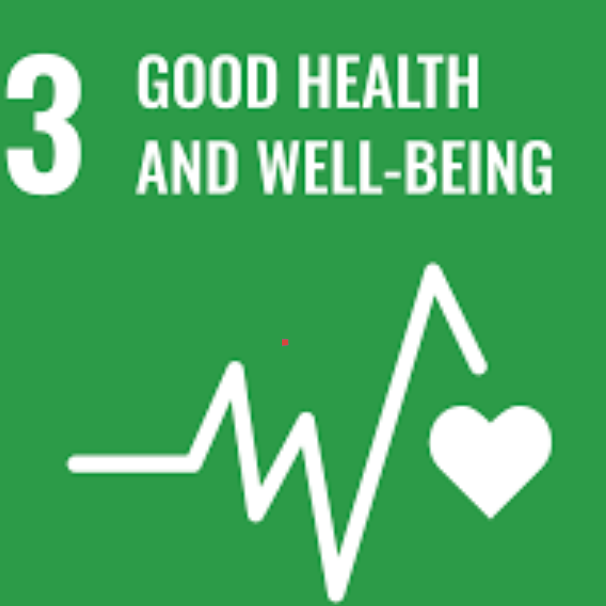REDEFINING GLOBAL HEALTHCARE: ADJUSTING THE SDGs FOR PRACTICAL, SCALABLE IMPACT
A Sustainable, Technology-Driven, and Community-Led Approach
Ajisafe Damilola Ifeoluwa
1. Introduction: Adjusting the SDGs for Real-World Feasibility
We all know the Sustainable Development Goals (SDGs) were designed to solve some of the world’s biggest problems, but if we’re being honest, many of these goals struggle with implementation in real-world settings. The intentions are solid, the frameworks look great on paper, but when you step into the actual communities they are meant to serve, you realize the gaps.
About healthcare access:
SDG 3.8 (Universal Health Coverage) sets the target of getting quality healthcare to everyone. But what do we see on the ground? Non-functional primary healthcare centers (PHCs), lack of trained personnel, and an overburdened tertiary system.
SDG 3.3 (Eliminating Neglected Tropical Diseases – NTDs) focuses on getting preventive chemotherapy drugs to the people who need them. But in reality? The drugs are available, but the last-mile distribution is weak.
SDG 3.d (Health Emergency Preparedness) talks about strengthening disease surveillance, but let’s face it; health systems in many regions are reactive rather than proactive. They don’t detect outbreaks until it’s too late.
This is where our solution comes in. We are not just aligning with the SDGs; we are adjusting them to work within existing infrastructure, real economic constraints, and actual on-the-ground realities.
Here’s how we fix these gaps:
✔️ Instead of building new PHCs, we revitalize non-functional ones and integrate them into a low-cost, high-impact healthcare network.
✔️ Instead of relying on a government-only approach to NTD drug distribution, we leverage local pharmacies as last-mile distributors.
✔️ Instead of just talking about AI in healthcare for futuristic models, we embed AI-driven triage into PHCs and pharmacies to make existing health workers more effective.
✔️ Instead of making healthcare free (which is unsustainable), we introduce micro-health insurance models that allow communities to contribute what they can afford.
This is the adjustment we are making to the SDGs: less theory, more practical execution. We are redesigning the approach so that these global goals actually become achievable in real communities.
2. The Integrated Solution
A. Transforming Non-Functional PHCs into Community Health Hubs (Fixing SDG 3.8 – Universal Health Coverage)
It makes no sense to keep talking about building more primary healthcare centers (PHCs) when there are hundreds of them already standing but completely non-functional due to lack of funding, personnel, and equipment.
✔️ How? We partner with local governments, NGOs, and private organizations to refurbish existing PHCs with:
Basic medical equipment for primary care.
Telemedicine booths for virtual doctor consultations.
AI-powered triage tools that help health workers assess patients faster.
Trained community health workers to manage day-to-day operations.
✔️ Financial Model:
Public-Private Partnerships (PPPs) fund infrastructure and equipment.
Micro-health insurance ensures steady operational funding.
Corporate Social Responsibility (CSR) investments support PHC sustainability.
✔️ Policy & Regulation Consideration:
Government licensing for AI-powered diagnostic tools.
Integration with national health policies to ensure PHC sustainability.
Policy advocacy for PPP models in primary healthcare investment.
✔️ Impact?
Immediate improvement in healthcare access without costly new infrastructure.
Reduction in unnecessary visits to overburdened tertiary hospitals.
Strengthened community trust in the healthcare system.
✅ SDG Adjustment: Instead of pushing for new PHC construction, we maximize what already exists and make it work efficiently.
B. Using Local Pharmacies as NTD Drug Distribution Hubs (Fixing SDG 3.3 – Elimination of Neglected Tropical Diseases)
One of the biggest issues in tackling Neglected Tropical Diseases (NTDs) isn’t the availability of drugs, it’s distribution. The drugs exist, but they don’t always reach the people who need them.
✔️ How do we fix this? We integrate local pharmacies into the distribution network for preventive chemotherapy drugs.
We train pharmacists to handle NTD preventive drug administration safely.
We create a digital tracking system to monitor drug distribution and ensure they reach target populations.
Community outreach campaigns are run alongside pharmacies to increase awareness and participation.
✔️ Financial Model:
Government-provided drugs, distributed via pharmacy-driven micro-franchising.
Pharmacists receive incentives for participation, ensuring sustainability.
✔️ Policy & Regulation Consideration:
Standardized training protocols for pharmacist-led distribution.
Incorporation of pharmacists into national disease elimination programs.
✔️ Impact?
More people actually receive the drugs that are supposed to protect them.
Faster and more efficient last-mile delivery of life-saving medication.
Less reliance on slow, centralized government distribution channels.
✅ SDG Adjustment: Instead of assuming governments alone can distribute NTD drugs, we involve the private sector (pharmacies) for better reach.
C. AI & Telemedicine to Bridge the Doctor Shortage Gap (Fixing SDG 3.d – Health Preparedness & Surveillance)
✔️ How does this work?
AI-powered symptom-checking kiosks in PHCs and pharmacies.
Remote consultations with doctors via telemedicine booths.
AI-driven patient prioritization; ensuring critical cases get urgent attention.
✔️ Financial Model:
Subscription-based AI support for PHCs, reducing dependence on costly doctors.
Private health-tech partnerships to fund AI system development.
✔️ Policy & Regulation Consideration:
Government approval of AI tools for medical triage.
Regulatory compliance for telemedicine platforms across borders.
D. Micro-Health Insurance for Financial Sustainability
✔️ How does it work?
Community members contribute as little as $1/month for healthcare coverage.
The fund is pooled to sustain PHC operations, telemedicine services, and drug access.
Subsidies are available for the most vulnerable populations.
✔️ Financial Model:
Community-based micro-insurance pools fund PHC services.
Tech-enabled premium collection systems reduce inefficiencies.
✔️ Policy & Regulation Consideration:
Government oversight for insurance funds to prevent fraud.
Integration with national health insurance schemes for scalability.
3. Scaling, Monitoring & Evaluation (M&E) with Key Performance Indicators (KPIs)
Phase 1: Pilot in Nigeria (Year 1 – Proof of Concept)
✔️ What We’re Doing
Reactivating 5 PHCs, integrating AI & telemedicine booths.
Training 100 pharmacists as NTD drug distributors.
Enrolling 50,000 people in a micro-health insurance scheme.
✔️ Financial Model at this Stage
Seed funding from health-tech investors.
Government subsidies for PHC reactivation.
Micro-insurance contributions for operational costs.
✔️ Policy & Regulation Consideration
Approval of AI tools for PHC use.
Pharmacist certification for drug distribution.
✅ At 1 Year
All 5 PHCs operational, 50% telemedicine adoption.
100 pharmacists distributing drugs efficiently.
50,000+ insured, seeing real health benefits.
Phase 2: Expansion and Scaling (Year 2-3 – National Integration)
✔️ What We’re Doing
Expand the AI-enhanced PHC model to 100 additional PHCs across the region.
Increase the number of trained pharmacists to 500, enabling broader access for drug distribution.
Expand the micro-health insurance program to reach 500,000 people, integrating additional subsidies for vulnerable populations.
Establish digital health records for all patients to improve data integration and tracking.
✔️ Financial Model at this Stage
Micro-health insurance contributions become more sustainable as enrollment increases.
Private sector funding for AI tools and telemedicine services expansion.
Collaborations with international organizations for scaling the model regionally.
✔️ Policy & Regulation Consideration
National policy alignment for AI in healthcare and remote consultations.
Government-led regulatory frameworks for insurance integration and oversight.
Strengthening public-private partnerships (PPP) for ongoing PHC development.
✅ At 3 Years
100 PHCs operational, 75% telemedicine adoption.
500 pharmacists involved in NTD distribution, with a significant increase in access to drugs.
500,000 insured individuals with evidence of reduced health disparities.
Phase 3: National Rollout and Global Adaptation (Year 4 and Beyond – Regional Expansion)
✔️ What We’re Doing
Full national coverage with 1,000 PHCs integrated into the network.
Regional expansion to neighboring countries with similar healthcare challenges.
Incorporate AI-driven health systems across the entire healthcare system, including public hospitals.
Integrated health information systems that connect PHCs, pharmacies, and hospitals for comprehensive patient care.
Strengthen global partnerships for knowledge transfer, capacity building, and cross-border healthcare collaboration.
✔️ Financial Model at this Stage
National insurance schemes integrate with regional health insurance models.
International funding and grants for health tech adoption in other regions.
Corporate partnerships and private investment to ensure long-term sustainability.
✔️ Policy & Regulation Consideration
Harmonized regional policies to allow easy cross-border health data exchange.
International regulations for telemedicine and digital health tools.
Standardized international frameworks for micro-insurance and healthcare finance.
✅ At 5 Years and Beyond
Full health system integration with 1,000+ PHCs and telemedicine adoption.
Regional model ready for scaling across Africa and other developing regions.
Global recognition and partnerships with international healthcare organizations.
4. Conclusion: SDG Adjustments That Make Sense
This is not just another theoretical SDG-aligned project. This is an SDG-adjusted model designed to work in the real world.
Let’s stop chasing big, unrealistic plans and start making the SDGs work practically for the people who need them most.
Ajisafe Damilola Ifeoluwa
damilolaajisafe809@gmail.com


